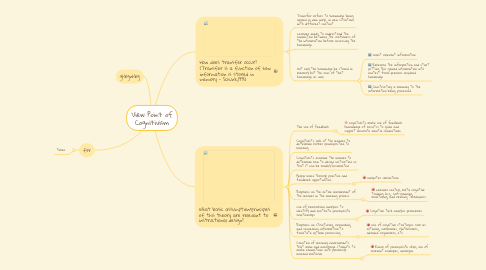View Point of Cognitivism
by Syafiza syuffey


1. frr
1.1. tehee
2. ghbgnhbg
3. How does transfer occur? (Transfer is a function of how information is stored in memory - Schunk,1991)
3.1. Transfer refers to knowledge being applied in new ways, in new situations with different content
3.2. Learner needs to understand the connection between the usefulness of the information before assessing the knowledge
3.3. Not only the knowledge be stored in memory but the uses of that knowledge as well.
3.3.1. Select relevant information
3.3.2. Rehearse the information and start putting this gained information into context from previous acquired knowledge
3.3.3. Constructing a meaning to the information being processed
4. What basic assumption/principles of this theory are relevant to instructional design?
4.1. The use of feedback
4.1.1. cognitivists make use of feedback (knowledge of results) to guide and support accurate mental connections.
4.2. Cognitivists look at the learner to determine his/her predisposition to learning
4.3. Cognitivists examine the learner to determine how to design instruction so that it can be readily assimilated
4.4. People learn through practice and feedback opportunities
4.4.1. computer simulations
4.5. Emphasis on the active involvement of the learner in the learning process
4.5.1. Learner control, meta cognitive training (e.g., self-planning, monitoring, and revising techniques)
4.6. Use of hierarchical analyses to identify and illustrate prerequisite relationships
4.6.1. Cognitive task analysis procedures
4.7. Emphasis on structuring, organizing, and sequencing information to facilitate optimal processing
4.7.1. Use of cognitive strategies such as outlining, summaries, synthesizers, advance organizers, etc.
4.8. Creation of learning environments that allow and encourage students to make connections with previously learned material
4.8.1. Recall of prerequisite skills; use of relevant examples, analogies

